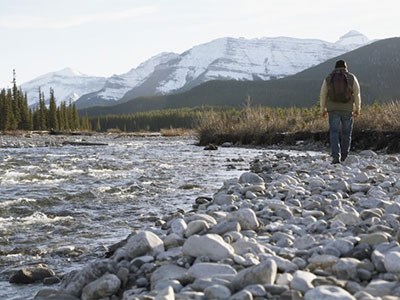There’s a lot of history in Northern Ontario, and as WSP’s Senior Archeological Consultant, its Douglas Yahn’s job to help preserve it.
The emphasis on minimizing the impact of development on archeological sites dovetails nicely with Yahn’s other role as Environmental Coordinator for Northern Ontario with the global engineering and consulting firm.
“Biological, physical and human environments have an impact on every study, whether it is in the mining sector, transportation and infrastructure, building properties such as subdivisions or really anything,” he said. “As part of the environmental assessment process, we look at the potential for an area to have cultural heritage resources.”
In his capacity as an archaeologist, Yahn does work throughout the province for WSP. In the south, a lot of historical finds are related to early European settlement, agriculture and even earlier activities. Proximity to water is a large factor. In Northern Ontario, artifacts are frequently discovered along waterways once used for travel, he said.
"Do we envision that canoes paddled by voyageurs and/or Aboriginal people were moving along the waterway? Perhaps, so the shorelines can have archaeological potential. So, when you are reconstructing a bridge, for example, you need to explore that potential."
Yahn calls the archeological potential in Northern Ontario “distinct” with many important First Nation historical sites situated throughout the landscape, all of which hold significance for present day First Nations communities.
“It’s important to respect the values of every community; a community may let us know that a particular area contains a special place or value. That just lets us know that we have to be even more sensitive, my role is to translate that sensitivity to the project.”
Bringing First Nations communities into the fold, early on during a project, is vital and having those lines of communication open can be a great help for a project, said Yahn.
“Even when you’re going to just look around, community members are a great source of information that should really be utilized right from the beginning, and it is a partnership. The friends that I've made in communities over the years are great resources.”
While they are less frequently encountered outside of urban areas, there are many Euro-Canadian artifacts worth preserving in Northern Ontario as well, Yahn said.
“It could be an old logging camp, it could be a trapper’s cabin, whether it belonged to a Euro-Canadian individual or a First Nations individual doesn’t change the fact that it has a value when it comes to telling the story of our history.”
In addition to archaeology, Yahn helps coordinate WSP’s environmental services offerings out of its Thunder Bay office alongside a dedicated team.
“We do environmental planning, permitting, social acceptability projects, audits and due diligence, site remediation, waste management, built environment services, natural environment services, and really anything that falls under those areas; noise studies, air quality studies, geoscience and various baseline studies, for example.”
With a low population density, and a lot of untouched wilderness, one might think conducting environmental studies in Northern Ontario would be more challenging. Yahn thinks it comes down to different considerations.
“In certain urban areas you may be looking at past land use and whether there are hazardous materials that are in the soil, in the non-urban areas of Northern Ontario we’re looking more at things like mitigation measures to avoid contamination of streams from new projects.”
Ultimately, Yahn said it’s about achieving the basic aims of protecting the environment and trying to enhance awareness whenever possible during a project.
With the new global footprint offered by being part of WSP, Yahn said the local office has many experts in the world just a phone call or email away.
“It is about the global knowledge we have being applied to local situations with local experienced staff. I regularly communicate with archaeologists based in the U.K. and Sweden and the U.S.”
On one project, the cross-pollination within WSP already paid off for Yahn and his team, and on another occasion he was able to return the favour.
“I've participated with my colleagues in Sweden on a project here in Ontario where they were able to contribute to the work that I did, and vice versa, I was able to contribute to their work that was occurring in Spain,” he said. “It is really interesting.”




